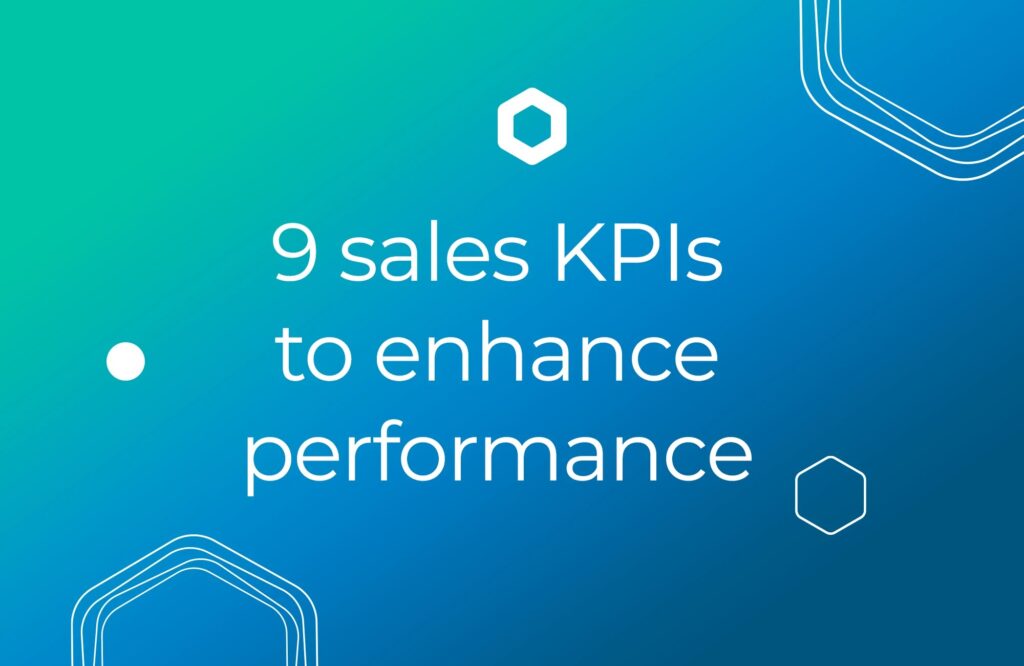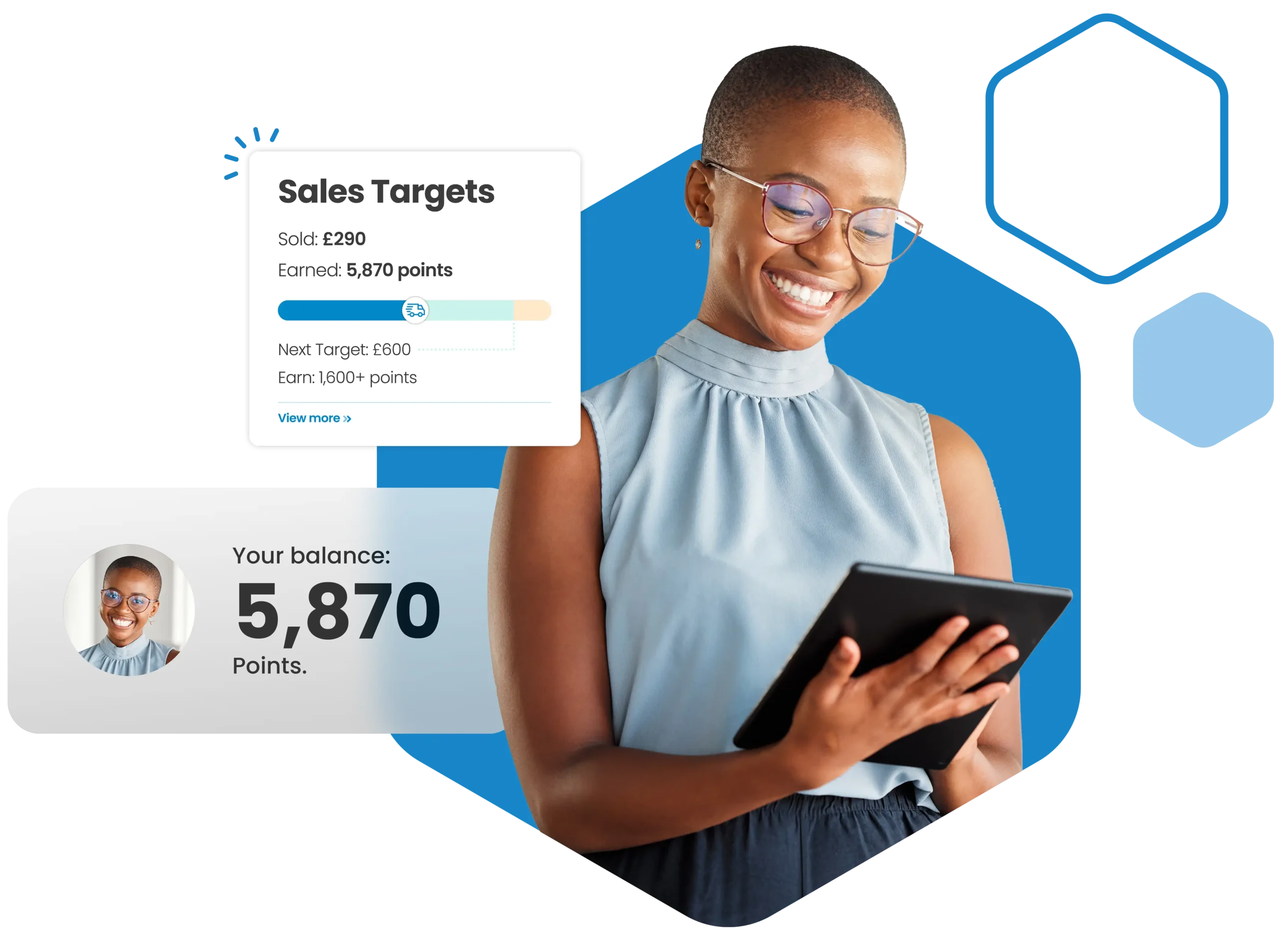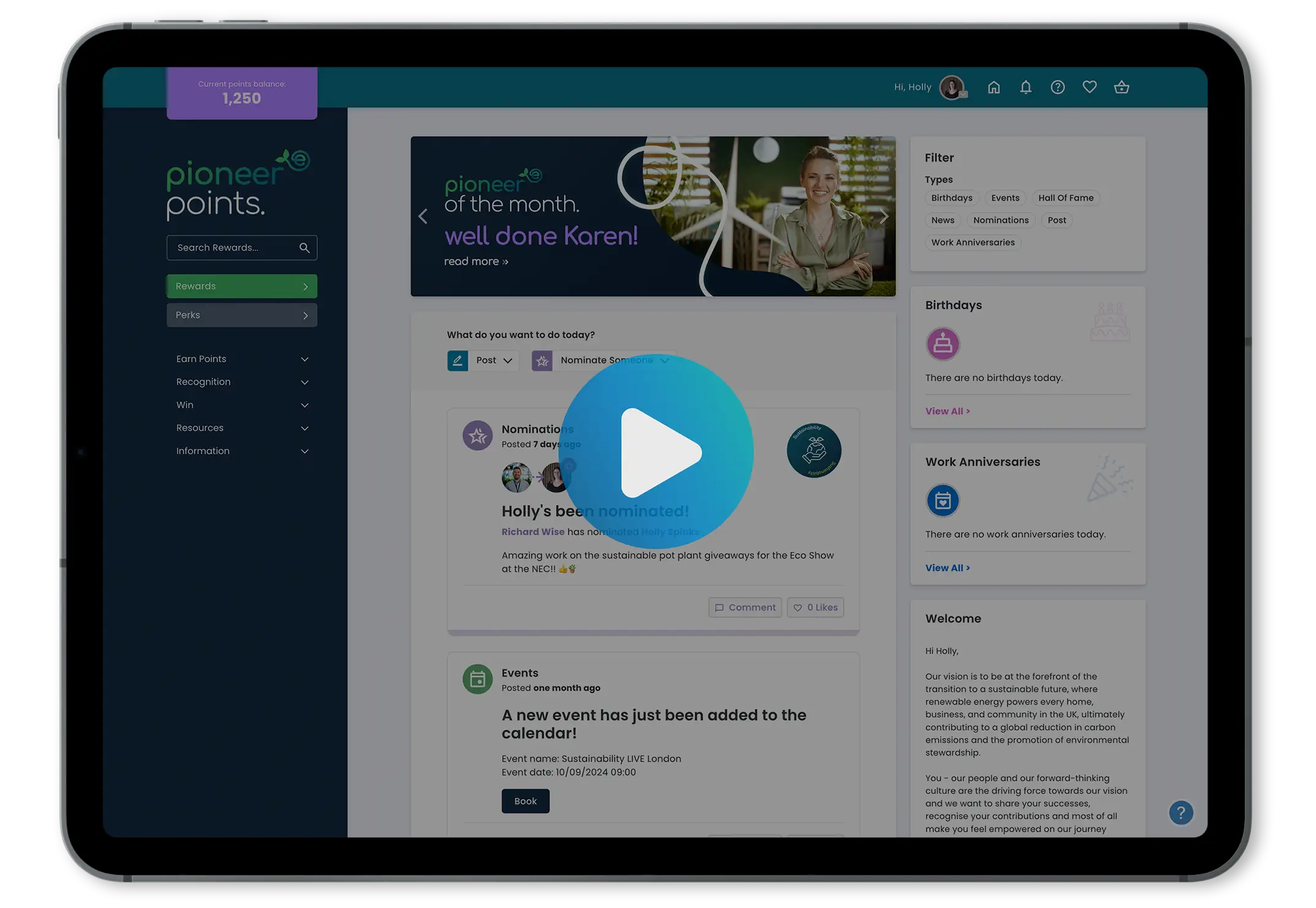


Over the years, the strategic use of sales Key Performance Indicators (KPIs) has become a cornerstone for organisations striving to achieve and surpass their growth objectives.
KPIs for sales teams offer a reliable roadmap, providing quantifiable insights into the efficiency and effectiveness of sales training, processes, team motivation, alignment with organisational goals and of course, their overall effectiveness.
From their foundational principles to the practical implementation of tracking systems, in this article we’ll explore how Sales Directors, Commercial Managers, HR teams and MDs can leverage KPIs to measure sales performance, make informed decisions and foster continuous improvement for sustained growth within the high-pressure environment that is sales.
Skip to:

What are sales performance indicators?
Sales Key Performance Indicators are quantifiable metrics that businesses use to measure and evaluate the effectiveness of their sales efforts in achieving specific objectives.
These indicators help organisations assess various aspects of their sales performance, identify strengths and weaknesses, and make data-driven decisions to improve overall sales outcomes.

Why are sales KPIs so important?
Key performance indicators serve as valuable tools for sales teams, offering insights that are crucial for effective management. They act as directional aids, helping organisations navigate the complexities of sales endeavours by providing tangible benchmarks and measurable data.
Ultimately, they help identify what’s working well, what needs improvement, and where adjustments should be made.
Sales KPIs are crucial for several reasons:
- Performance measurement
Sales metrics provide a quantitative and measurable way to assess the performance of the team and the overall sales process. - Goal alignment
KPIs help align individual and team efforts with broader organisational goals. By establishing specific metrics, everyone in the sales team understands the expectations and objectives to create a key focus on key priorities.
- Data-driven decision-making
Sales KPIs provide valuable data that enables informed decision-making by identifying trends and areas of opportunity or concern, allowing for proactive adjustments to strategies. - Resource allocation
Organisations can allocate resources more effectively by understanding which activities and channels contribute most to sales success. This ensures that time, budget, and efforts are directed toward initiatives that yield the highest returns. - Early issue detection
Monitoring KPIs allows for the early detection of issues or challenges in the sales process. Whether it’s a decline in conversion rates or an increase in customer churn, early identification enables proactive problem-solving before issues escalate.

How to choose the right sales KPIs
For sales performance metrics to prove successful, they should align with the SMART criteria (Specific, Measurable, Achievable, Relevant and Timely). Embracing a “less is more” philosophy allows the sales team to focus on the most impactful KPIs that drive efforts toward core objectives.
Once these vital KPIs are identified, they should be integrated with Customer Relationship Management (CRM) software, which presents chosen metrics in an easily digestible format via a dashboard. As such, the team can easily monitor progress towards goals and gain immediate insights into real-time sales data.
Below, we have formed a step-by-step guide on how to choose the right sales KPIs:
 Set clear business goals
Set clear business goals
Start by defining your overarching business objectives—whether it’s increasing revenue, expanding market share, or acquiring new customers. Your choice of Key Performance Indicators should seamlessly align with and directly contribute to each goal.
Be sure to incorporate behaviour-driven goals linked to your brand values as well as target-focussed goals, so you deliver the optimal customer experience.
 Explore your sales journey
Explore your sales journey
Dive deep into the intricacies of your sales process, covering everything from lead generation to deal closure and post-sale activities. Identify pivotal stages and touchpoints where KPIs can provide meaningful insights, helping you understand the dynamics of your sales operations.
 Align with sales strategies
Align with sales strategies
Tailor your KPI selection to match the specific strategies employed by your sales team. If customer retention is a priority, consider incorporating KPIs such as customer satisfaction, retention and referral rates or targets related to upselling or cross-selling into your monitoring framework.
 Collaborate with key stakeholders
Collaborate with key stakeholders
Engage with key stakeholders, including sales managers, team leaders, and executives. Seek input on critical aspects of sales performance that align with organisational goals.
 Emphasise leading indicators
Emphasise leading indicators
Always integrate leading indicators that offer insights into future performance. Keep an eye on metrics like qualified leads or the sales pipeline to anticipate and strategise for upcoming revenue trends.
 Balance quantitative and qualitative metrics
Balance quantitative and qualitative metrics
Strike a balance between quantitative metrics (e.g., revenue, conversion rates) and qualitative metrics (e.g., customer satisfaction, Net Promoter Score). This dual approach paints a comprehensive picture of sales performance and customer relationships, capturing both the numbers and the customer experience.
 Ensure measurability
Ensure measurability
Choose KPIs that are easily measurable and supported by reliable data and analytics tools. This ensures efficient tracking and analysis, empowering your team to monitor and respond effectively to the selected metrics, and fostering a data-driven approach to decision-making.
 Regular review and iteration
Regular review and iteration
Periodically review your chosen KPIs to ensure ongoing relevance to evolving business objectives. Stay adaptable and be open to adjusting or adding new KPIs based on market dynamics or changing strategies.

Sales KPIs you should track to boost performance
Enhancing your sales team’s performance is all about navigating the right KPIs that resonate with your business objectives and sales approaches.
Here are a few key areas that sales teams should be monitoring as part of their sales KPI process:
- Revenue:
Total Sales: The overall revenue generated from sales.
Net Sales: Total sales revenue minus returns, discounts, and allowances. - Sales growth: Month-over-month (MoM) or Year-over-Year (YoY) growth in sales.
- Conversion rate: The percentage of leads or prospects that convert into actual sales.
- Customer acquisition cost (CAC): The cost associated with acquiring a new customer, including marketing and sales expenses.
- Customer lifetime value (CLV or LTV): The total revenue a business expects to earn from a customer throughout their entire relationship.
- Sales pipeline metrics:
Number of deals in the pipeline: The total count of potential sales opportunities.
Pipeline value: The total potential value of all deals in the pipeline. - Win rate: The percentage of deals or opportunities that result in a successful sale.
- Lead-to-customer conversion rate: The percentage of leads that turn into paying customers.
- Sales cycle length: The average time it takes to move a prospect from the initial contact to closing a deal.
- Churn rate: The percentage of customers who stop using a product or service over a specific period.
- Profit margin: The percentage of revenue that represents actual profit after accounting for costs.
- Upsell and cross-sell metrics: Percentage of customers who make additional purchases beyond their initial transaction.

Important factors to consider
There are many factors that influence a salesperson’s effectiveness in their role. In fact, the KPIs above may not provide the whole story, so it’s important you also monitor the following, as they’ll no doubt influence the performance of your sales team on the whole.
Annual contract value (ACV)
Annual contract value (ACV) is a metric that quantifies the average sales amount derived from a customer contract over a year. It provides insights into the typical revenue generated from a customer relationship annually. It plays a pivotal role in helping sales representatives and managers identify opportunities for upselling and cross-selling, thereby enhancing the overall value of customer contracts and, ultimately, contributing to increased company revenue.
For scenarios where upselling or cross-selling may not be viable due to product portfolios or pricing structures, a low ACV could signal a need to acquire new customers as a strategy to drive revenue growth.
The formula for calculating ACV involves dividing the total sales value of contracts in a given year by the number of contracts and provides a clear picture of the average revenue generated per contract annually:
ACV Average = Total sales value of contracts in a year / Number of contracts
Customer Lifetime Value (CLV)
Customer Lifetime Value (CLV) calculates the total value of everything a customer buys from your company, including additional purchases like upsells, cross-sells, and renewals. Think of CLV as a report card for your team’s ability to build solid, trust-filled, and lasting relationships with customers. The better these relationships, the more likely customers are to make extra purchases in the future, and therefore, creates a steadier flow of income.
To find the CLV, here’s an easy calculation to follow:
Customer Lifetime Value = (Average Purchase Value per Year)×(Average Number of Purchases per Year for Each Customer)×(Average Customer Lifespan in Years)
Potential new leads
It’s essential to keep a close watch on the influx of fresh leads making their way into the sales representative’s pipeline each quarter. Recognising and understanding this surge in new leads is crucial when considering your conversion rate, such as if you were to close four deals for every seven leads.
The interconnection between the quantity of leads required to meet sales targets and these conversion rates is intricate. If a sales representative’s lead count happens to dip below the targeted Key Performance Indicator (KPI), it serves as a valuable signal to redirect efforts and allocate more time to lead generation activities. Essentially, it’s about ensuring that the pipeline remains brimming with potential opportunities waiting to be explored and converted into successful deals.
Conversion rates
The conversion rate (often referred to as the win rate) is a metric that measures the percentage of leads or prospects that successfully transition into closed deals. It’s commonly used in sales to evaluate the effectiveness of the sales process.
The conversion rate is calculated by dividing the number of closed deals by the total number of leads or prospects and then multiplying the result by 100 to express it as a percentage.
Here’s the calculation:
Conversion Rate = (Number of Closed Deals / Total Number of Leads or Prospects) x 100
For example, if a sales representative closes 20 deals out of 100 leads, the conversion rate would be 20%. A higher conversion rate indicates a more effective sales process, while a lower rate may signal areas for improvement in sales strategies or tactics.
Customer retention
This metric is the percentage of customers who stick around and consistently purchase your products or services. On the flip side, there’s the churn rate, which shows the percentage of customers who decide to move on and stop using what you offer.
While acquiring new customers contributes to revenue, it also demands substantial resources. Monitoring customer retention and seizing opportunities for upselling and cross-selling contributes to generating predictable revenue from a loyal customer base and therefore, maximises return on investment (ROI). So, if you notice a drop in customer retention, it might be time to rethink how your team engages with customers to make sure existing relationships take priority.
Here’s a breakdown of the formula with an explanation of each component below:
Customer Retention = (Overall Number of Customers at the End of the Year – Net New Customers Acquired During the Year) / Number of Customers at the Start of the Year) x 100
Let’s expand on each component of the Customer Retention formula:
- Overall number of customers at the end of the year: This is the total number of customers your business has when the fiscal year wraps up. It includes both the fresh faces you gained during the year and those who’ve stuck around for a while.
- Net new customers acquired during the year: This is all about the new customers you brought in over the year. It also considers those who decided to part ways in the same timeframe. The idea of “net new customers” means you’re counting both the new arrivals and the departures.
- Number of customers at the start of the year: This gives you the lowdown on how many customers you had right at the beginning of the fiscal year. It acts as the baseline; showing you the starting point for your customer count before anything happened during the course of the year.
Referrals
Referrals serve as a valuable Key Performance Indicator in assessing the effectiveness of your business’s outreach and customer satisfaction strategies.
This metric focuses on the number or percentage of new customers acquired through recommendations from existing customers, partners, or stakeholders. This KPI holds significance as it reflects the level of trust and satisfaction your current customer base has in your products, services or team. An increase in referrals often correlates with positive customer experiences, contributing to the credibility and reputation of your business.
To measure the Referral KPI, use the formula as a clear indication of new customers gained through referrals relative to the overall number of new customers:
Referral Rate = (Number of New Customers Acquired Through Referrals / Total Number of New Customers) * 100
If the referral rate is lower than desired, businesses can explore the use of referral programmes to improve satisfaction, and hopefully, customer loyalty.
Average age of leads in pipeline
This KPI is a timekeeper for how long leads meander through the pipeline before sealing the deal. It forms the understanding of the journey from “interested” customers to those who make a purchase, to help sales teams grasp how long leads stick around in the active sales pipeline.
A bustling pipeline is great, but its real strength lies in leads actively moving towards closing the deal. When deals get stuck, it’s not just a missed opportunity for revenue; it’s also eating into the precious time reps could spend on more promising prospects. If there’s a trend of leads loitering too long, it’s a signal to reevaluate the approach. This reevaluation calls for a strategic clean-up, removing leads that seem less likely to turn into a successful deal and streamlining the whole sales process.
To figure out the average age of leads in the sales pipeline, you use this simple formula:
Average Age of Leads in Pipeline = (Total Age of All Active Leads per Rep) / (Number of Active Leads)
Sales volume by location
This sales KPI is a practical tool to understand where products or services are selling well. It breaks down sales data by specific areas, like regions and countries; providing insights into the quantity of goods moved.
This metric is all about the actual sales numbers, helping businesses compare performance between different locations. By monitoring this over time, it becomes a useful guide to spot trends, understand customer preferences, and make informed decisions on resource allocation and strategy adjustments for each location.

How to track sales KPIs
Keeping a watchful eye on KPIs is a must to carefully monitor sales and to make smart decisions for improvement, if necessary.
Here are some important steps to keep in mind:
- Implement a data system: to collect and store relevant data, such as the use of Customer Relationship Management (CRM) software or online sales tracking tools.
- Establish benchmarks: for measuring performance and identify areas of improvement.
- Utilise a dashboard: to visualise your KPI data. This makes it easier to track progress, identify trends, and communicate results within your team.
- Set a tracking frequency: Decide how often you’ll track your KPIs. This could be daily, weekly, monthly, or based on your business cycle. Consistency is key to getting accurate insights.
- Gather and analyse data. Collect data including sales figures, customer feedback and conversion rates and analyse the results. Look out for patterns, anomalies, and areas where you’re meeting or falling short of your targets.
- Segment the data: such as the performance of the sales team, product category and customer segment divisions.
- Adjust strategies: Based on your analysis, make informed decisions to adjust your sales strategies. This could involve changes in marketing or sales tactics, for example.
- Track trends: Keep a historical record of your KPI data to track trends over time to gain perspective on the impact of changes and improvements.
Get ahead of the game by tracking your sales performance
Sales KPIs play a pivotal role in the strategic management of businesses, providing a robust framework for assessing performance and driving improvements.
By systematically tracking KPIs, organisations gain valuable insights of market dynamics and customer behaviour. This knowledge will help the business to make proactive decisions, tweak their SPIFF and wider incentive structure then adapt swiftly to industry shifts in an era where data-driven decision-making takes centre stage.



![How to inspire your sales team (and smash target!) {{ include_custom_fonts({"Poppins":["Semi Bold"]}) }}](https://no-cache.hubspot.com/cta/default/5921162/interactive-187541229676.png)





